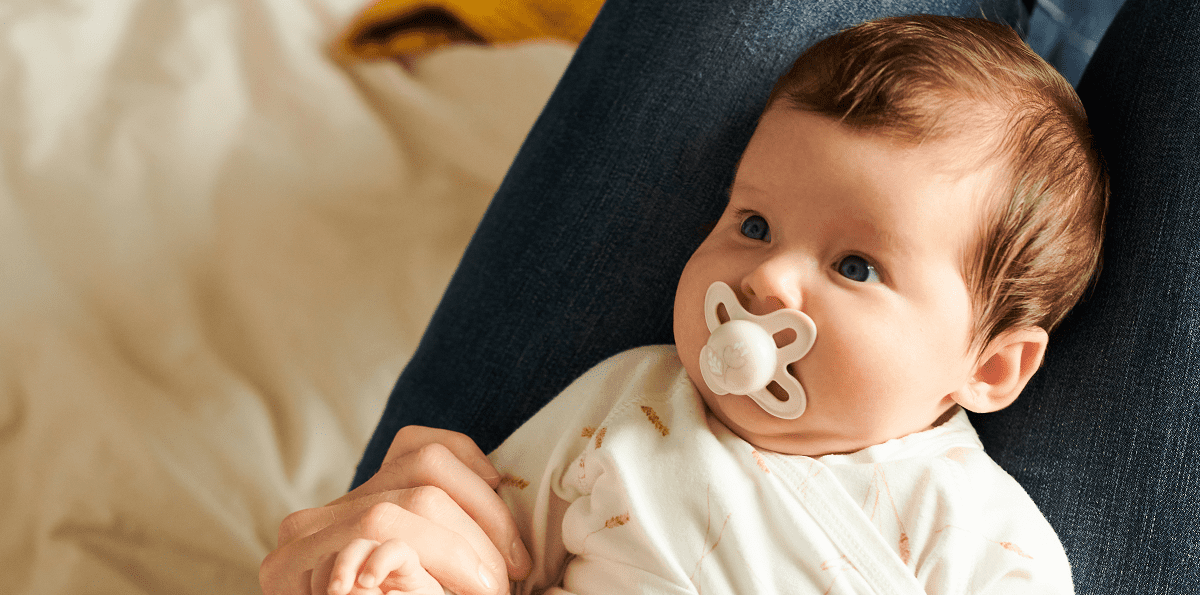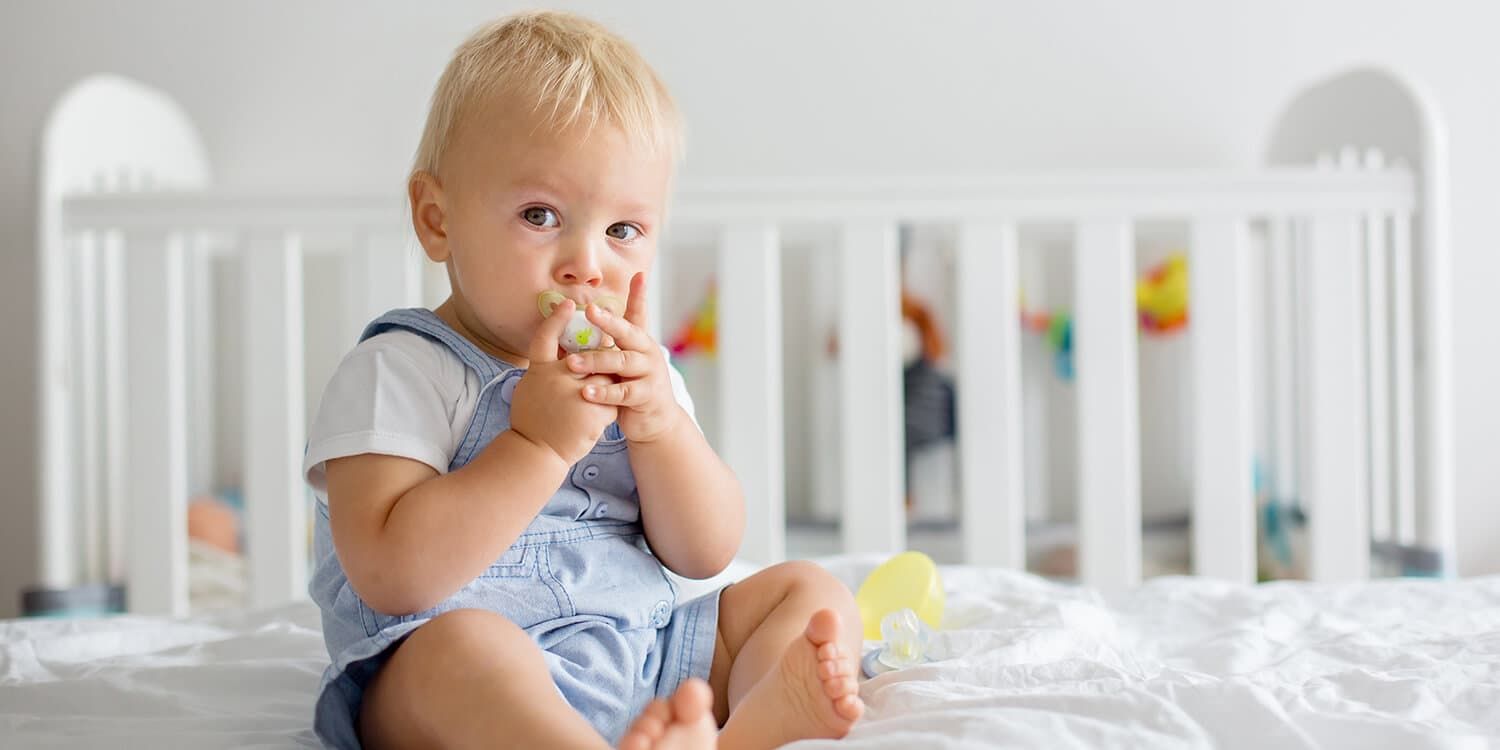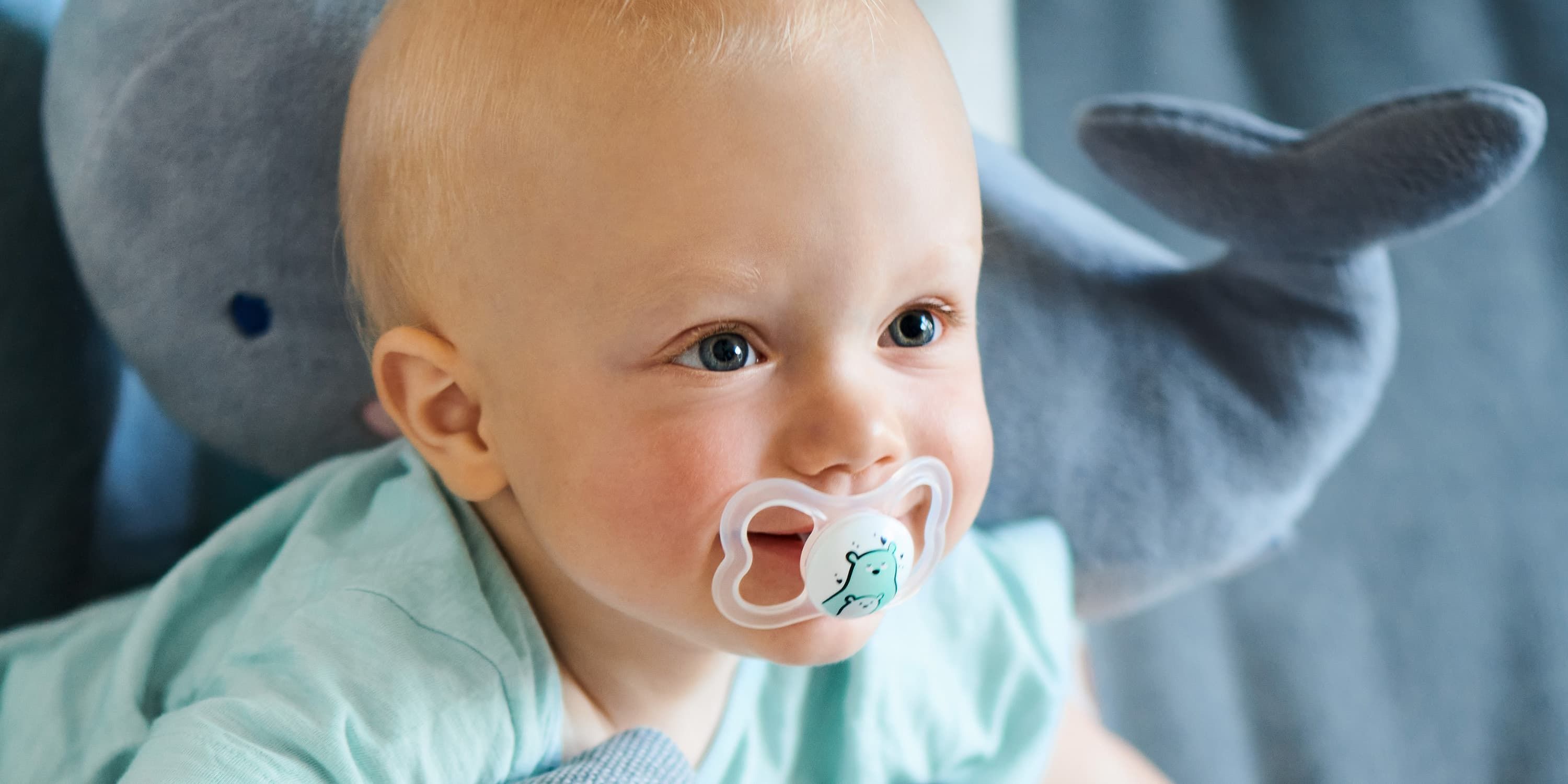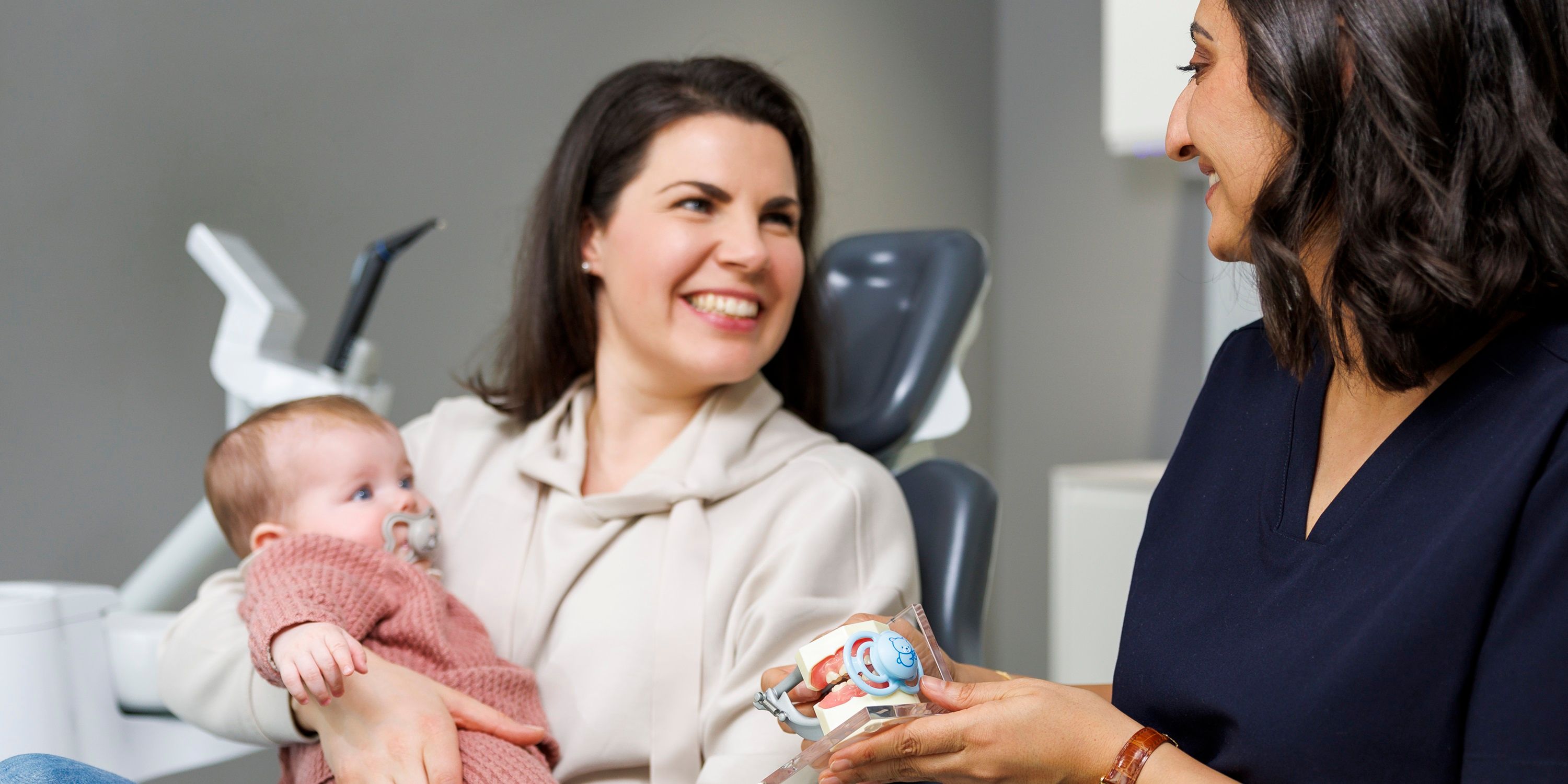Todos/as los/as niños/as tienen la necesidad de mamar para calmarse, incluso antes de nacer. Los chupetes pueden jugar un papel importante aquí y satisfacer la necesidad de chupar. Dependiendo de la edad, el chupete asume ciertas funciones. Aquí puedes saber cómo y cuándo se puede utilizar mejor el chupete y cuándo es el momento de retirarlo gradualmente.
Los/as bebés tienen una fuerte necesidad de succión. A partir de la semana 14 de embarazo, aproximadamente, se puede observar cómo se chupan los dedos mediante una ecografía.
Los/as bebés chupan cuando tienen hambre para consolarse o distraerse. Sobre todo en el primer año de vida, el chupete puede ser una ayuda útil para satisfacer la enorme necesidad de succión.
A medida que el/la niño/a crece, encuentra nuevas formas de calmarse sin chupete y de enfrentarse a situaciones frustrantes.
Los padres y madres y los/as niños/as suelen encontrar estresante el destete del chupete. En muchos casos, es el primer problema en la relación entre los padres y el/la niño/a hay que establecer los límites una y otra vez y se espera que el/la niño/a dé pasos en su desarrollo.
Hemos resumido para ti toda la información importante sobre el chupete y su función:
Función del chupete
Dependiendo de la edad del/de la niño/a, el chupete cumple diferentes funciones.
En los primeros meses de vida, chupar un chupete satisface la necesidad de succión y tiene un efecto tranquilizador. A medida que los/as niños/as crecen, encuentran otras maneras de reconfortarse y distraerse.
¿Por qué necesita el/la niño/a el chupete?
En el primer año de vida:
- Satisface la necesidad de chupar
- Tiene un efecto calmante y reconfortante
- Ayuda a aliviar la tensión
- Es una medida preventiva recomendada contra el síndrome de muerte súbita del lactante
En el segundo y tercer año de vida:
- Ayuda al/a la niño/a a tranquilizarse
- Ayuda a aliviar la tensión
- Puede actuar como "acompañante" para apoyar la independencia del/de la niño/a
Managing pacifiers use - the parents’ role
In the 1st year of life
- Use a pacifier to help comfort the child
- At the same time, start to develop other ways of comforting the child (e.g. relaxation through toys, music, physical presence)
In the 2nd and 3rd year of life
- Use pacifiers to provide comfort in specific situations
- Reduce the availability of the pacifier
- Start asking the child to remove the pacifier, for example, when speaking
After a child’s 3rd birthday
- Only use the pacifier in exceptional situations (e.g. moving house, new family situations)
- Encourage and use other methods to comfort the child
Weaning off the pacifier
When is my child ready to give up their pacifier? The 3rd birthday should be the time to say a final farewell to the pacifier. This is simply because at this age, the milk teeth are fully formed. When starting to reduce pacifier use, the environment the child is growing up in is crucial, as is their physical and mental development.
Physical development
Start to reduce pacifier use no later than when your child has teeth and is starting to speak. Their physical development has progressed to the point where they can move around by themselves and are beginning to explore their environment.
Mental and emotional development
The pacifier can help your child to become independent. It makes them feel secure and helps them manage challenging situations, such as separation from a guardian. As the child gets older, they will find other ways of dealing with these types of challenges.
The more your child can do this, the more likely they will be able to comfort themselves with something other than a pacifier. Do they look at books by themselves? Or are they happy playing by themselves, even if only for a short while? If so, they will slowly be ready to give up their pacifier. This will be the case for most children around the age of three, with help from their guardian.
Environment and general conditions
As well as their development, the child’s individual situation also needs to be taken into account. The pacifier is a crucial comforter, particularly in new phases of life. For example, when joining a playgroup or nursery or if they don’t have any brothers or sisters. A move can also temporarily unsettle them. In situations like this, it is reasonable to expect some delay in giving up the habit.
Sources: Maria Teresa Diez, Psychotherapist





